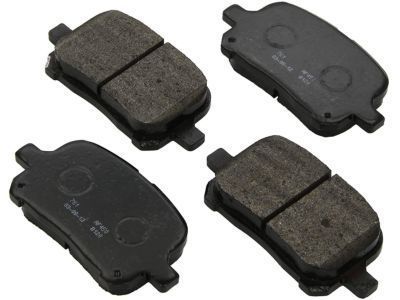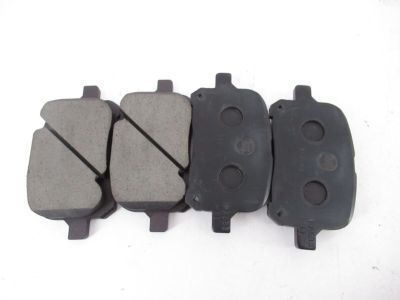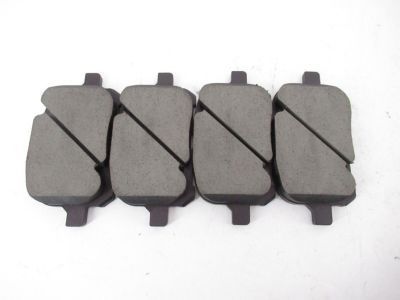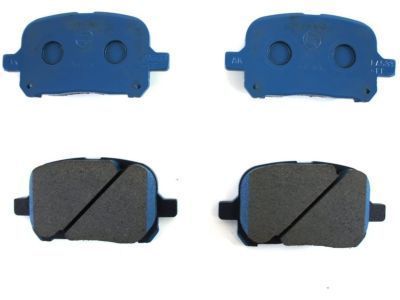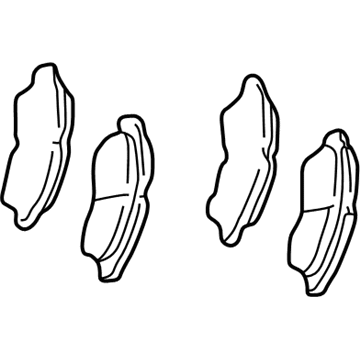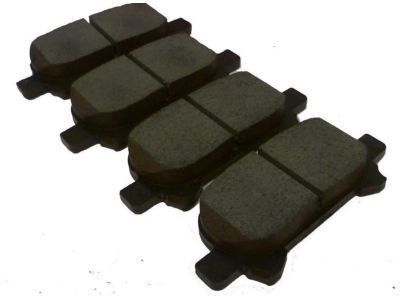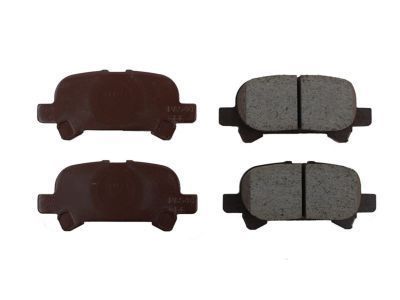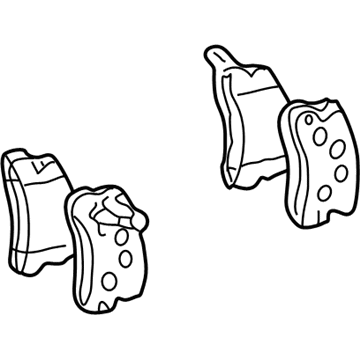×
ToyotaParts- Hello
- Login or Register
- Quick Links
- Live Chat
- Track Order
- Parts Availability
- RMA
- Help Center
- Contact Us
- Shop for
- Toyota Parts
- Scion Parts
My Garage
My Account
Cart
OEM 2000 Toyota Solara Brake Pad Set
Disc Brake Pad Set- Select Vehicle by Model
- Select Vehicle by VIN
Select Vehicle by Model
orMake
Model
Year
Select Vehicle by VIN
For the most accurate results, select vehicle by your VIN (Vehicle Identification Number).
2 Brake Pad Sets found

2000 Toyota Solara Pad Kit, Disc Brake, Front
Part Number: 04465-33121$76.89 MSRP: $106.79You Save: $29.90 (28%)Ships in 1-2 Business DaysProduct Specifications- Other Name: Pad Kit, Disc Brake; Disc Brake Pad Set; Brake Pads
- Manufacturer Note: MARK AK PA533
- Position: Front
- Replaces: 04465-33120
- Part Name Code: 04465
- Item Weight: 3.20 Pounds
- Item Dimensions: 10.3 x 7.5 x 5.5 inches
- Condition: New
- Fitment Type: Direct Replacement
- SKU: 04465-33121
- Warranty: This genuine part is guaranteed by Toyota's factory warranty.

2000 Toyota Solara Brake Pads, Rear
Part Number: 04466-33060$57.23 MSRP: $79.27You Save: $22.04 (28%)Ships in 1-2 Business DaysProduct Specifications- Other Name: Pad Kit, Disc Brake; Disc Brake Pad Set, Rear; Disc Brake Pad Kit; Rear Pads; Pad Kit, Disc Brake, Rear; Disc Brake Pad Set
- Manufacturer Note: MARK AK PA544
- Position: Rear
- Part Name Code: 04466
- Item Weight: 1.90 Pounds
- Item Dimensions: 6.6 x 4.2 x 3.2 inches
- Condition: New
- Fitment Type: Direct Replacement
- SKU: 04466-33060
- Warranty: This genuine part is guaranteed by Toyota's factory warranty.
2000 Toyota Solara Brake Pad Set
Looking for affordable OEM 2000 Toyota Solara Brake Pad Set? Explore our comprehensive catalogue of genuine 2000 Toyota Solara Brake Pad Set. All our parts are covered by the manufacturer's warranty. Plus, our straightforward return policy and speedy delivery service ensure an unparalleled shopping experience. We look forward to your visit!
2000 Toyota Solara Brake Pad Set Parts Q&A
- Q: How to replace the rear Brake Pad Set on 2000 Toyota Solara?A: To change rear brake pad, chip the wheel off and check the pad thickness. Caliper Lift the caliper, remove old pads and shims and inspect disc thickness. Install new pads, with anti-squeal shims so that friction surfaces are not touched by grease. The caliper should be reinstalled along with torque bolts, and a check of the fluid level after changing the wheel.
